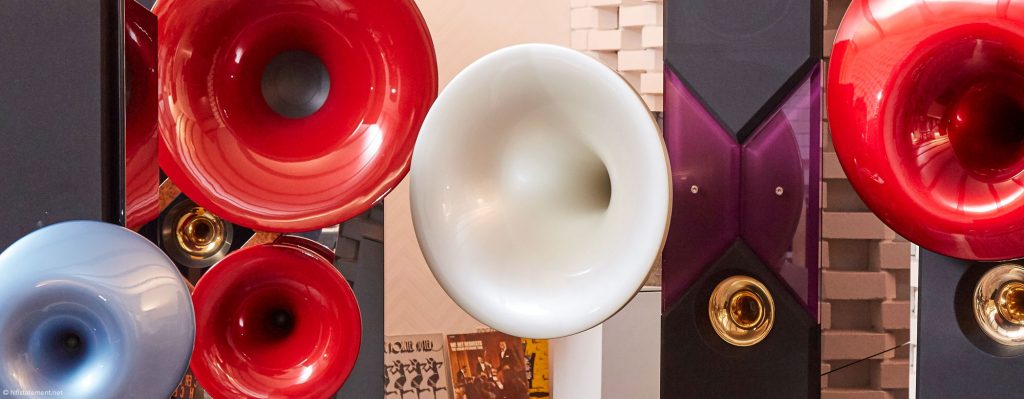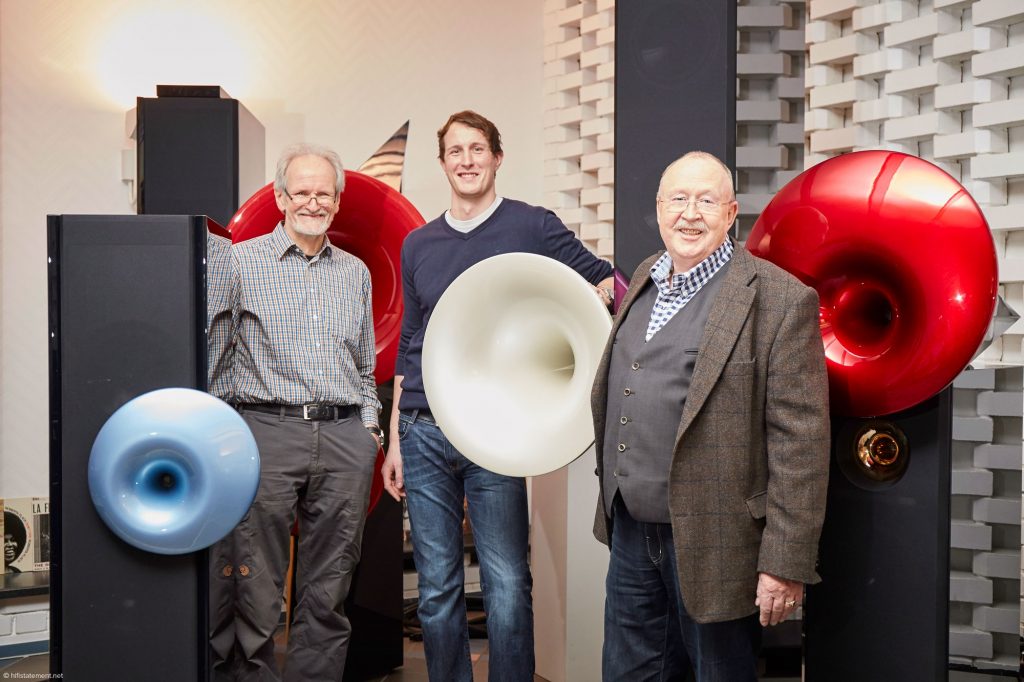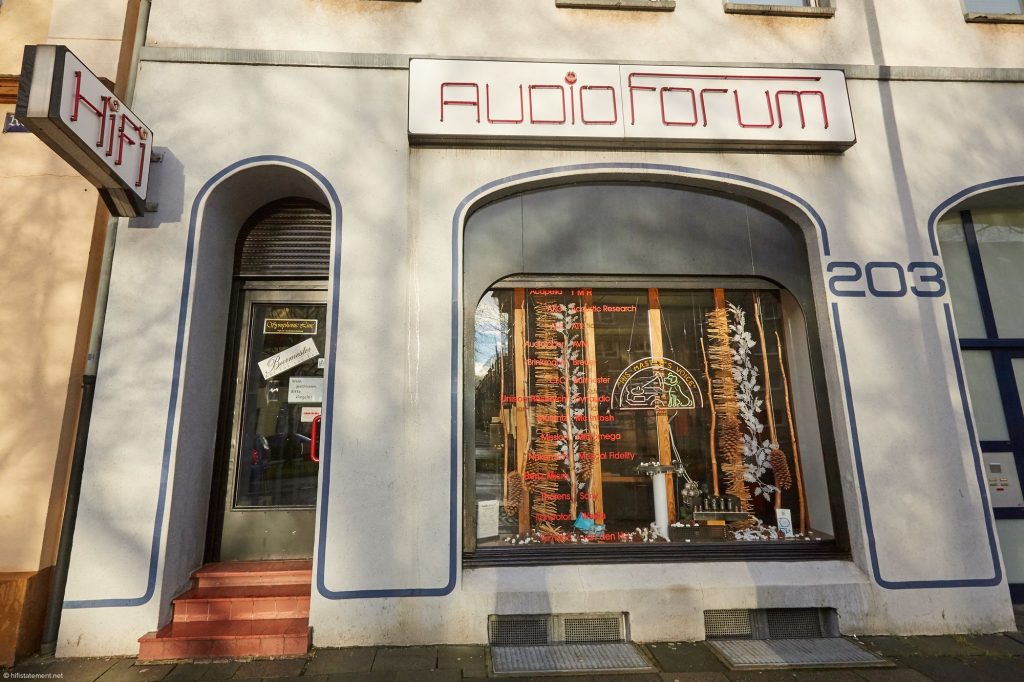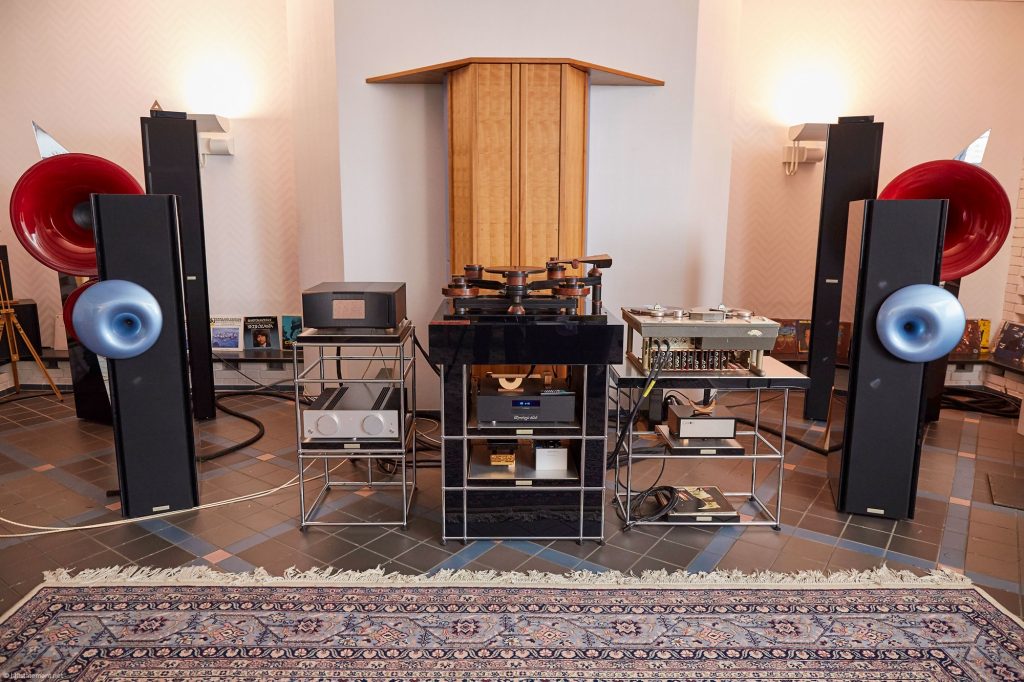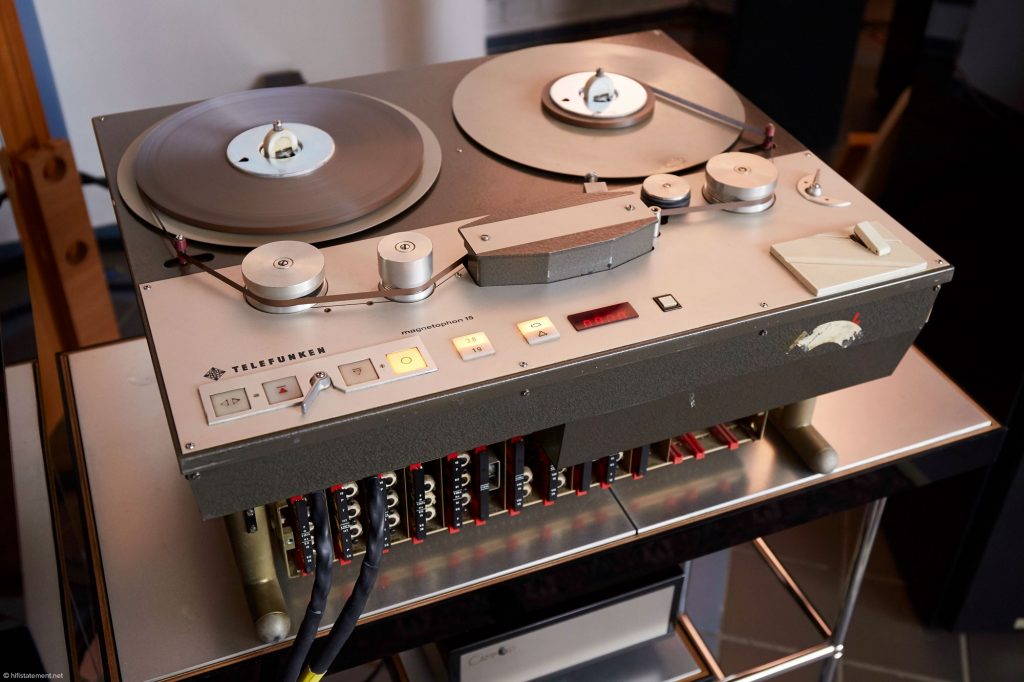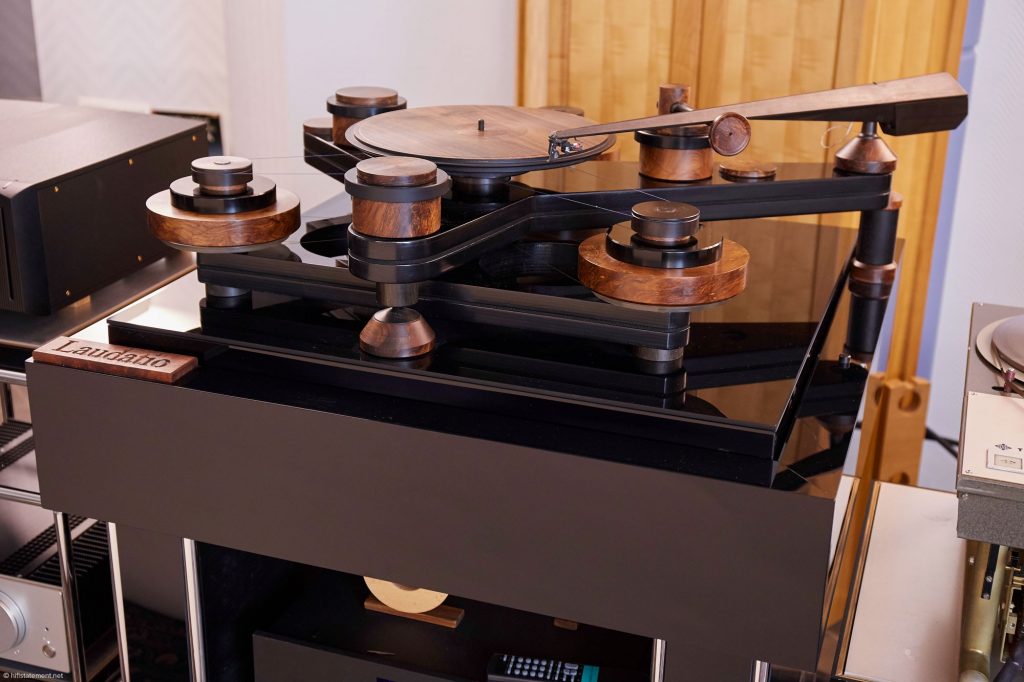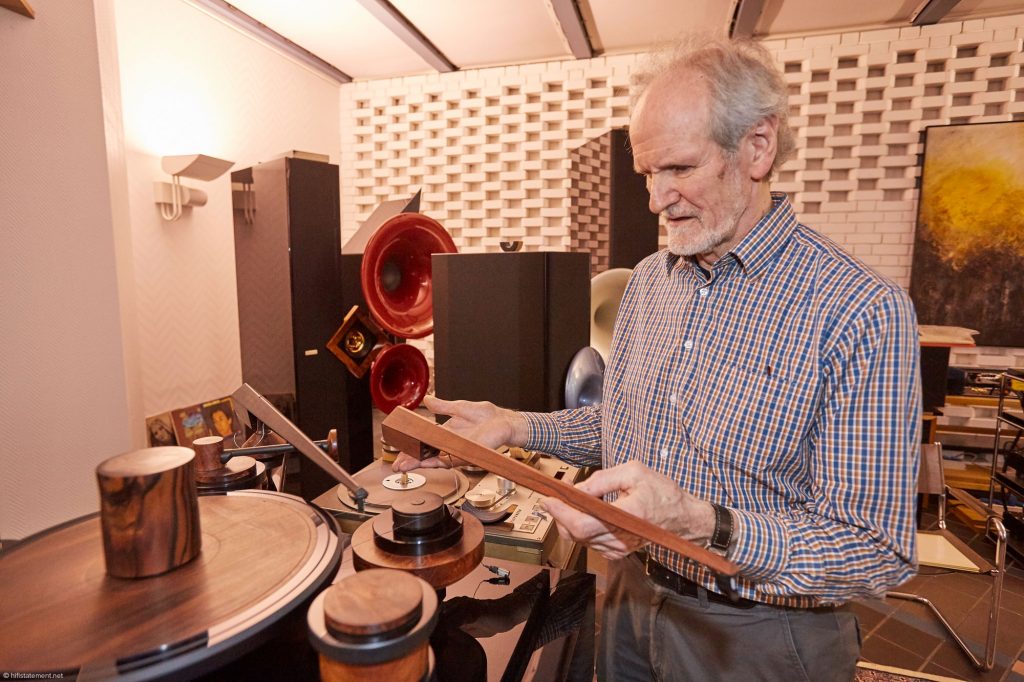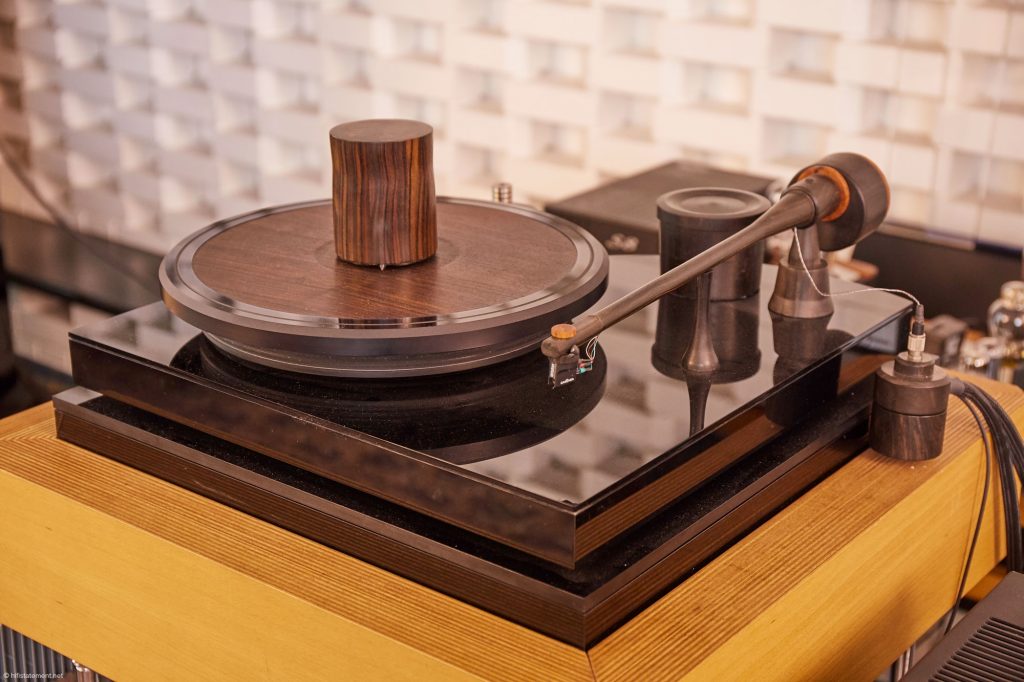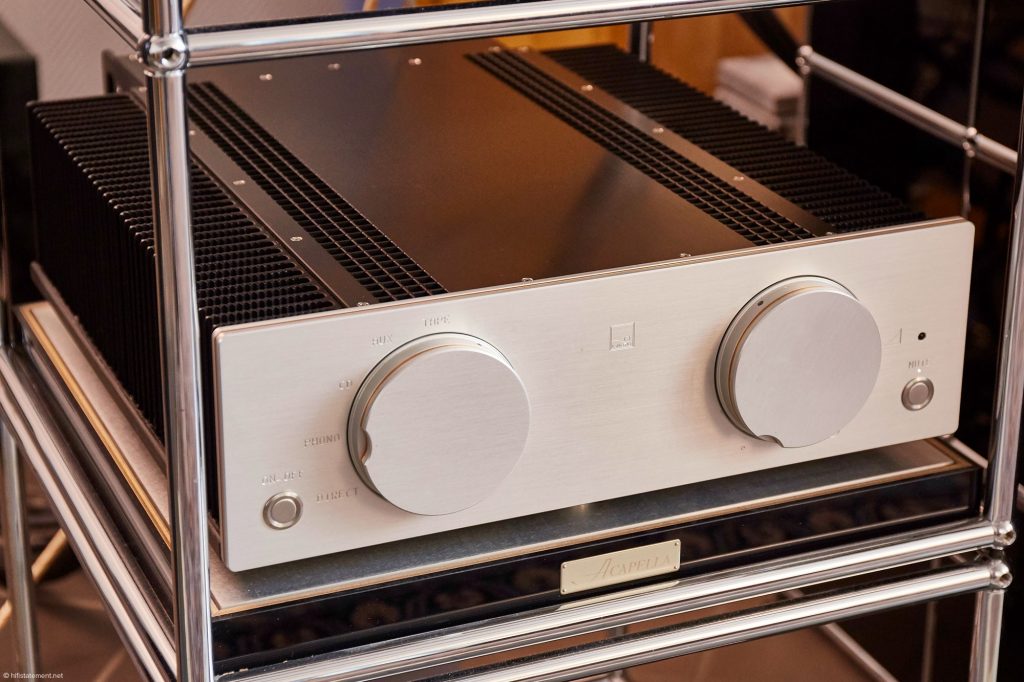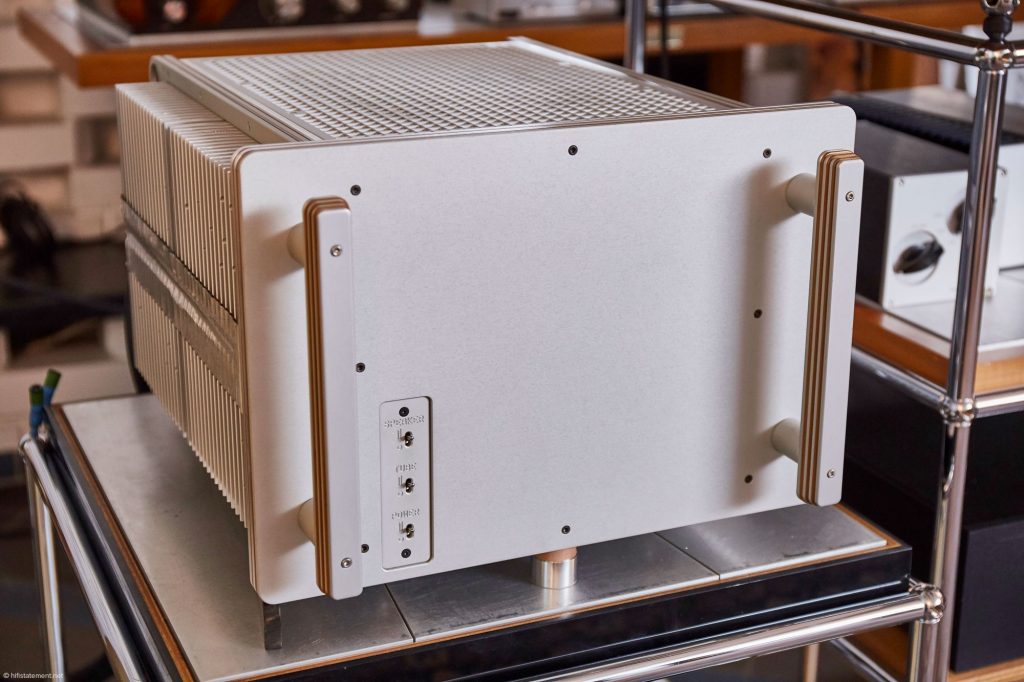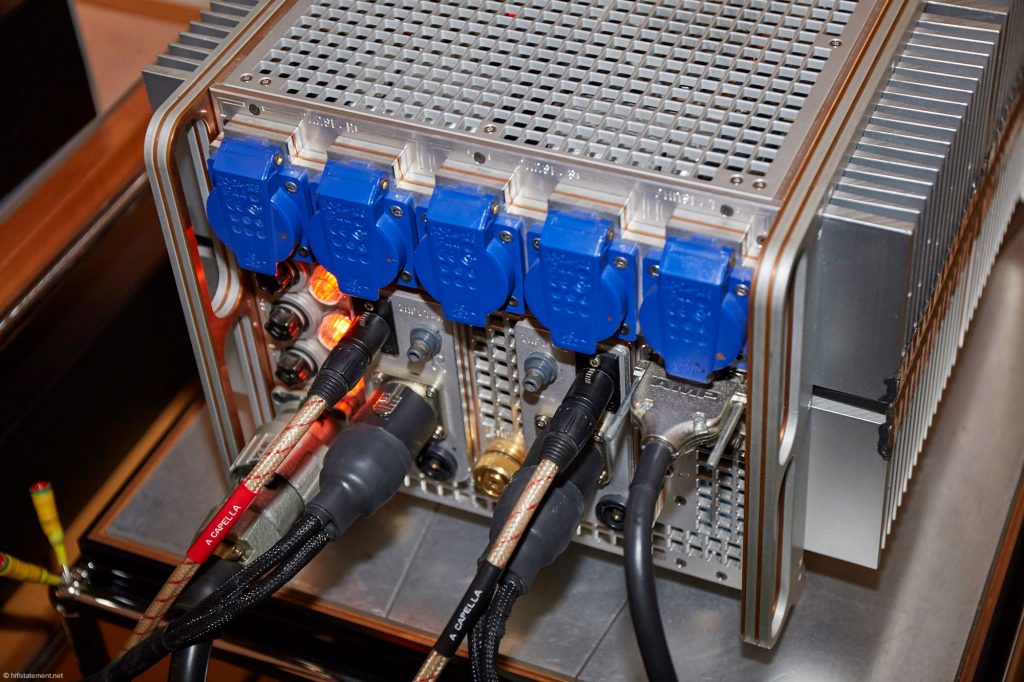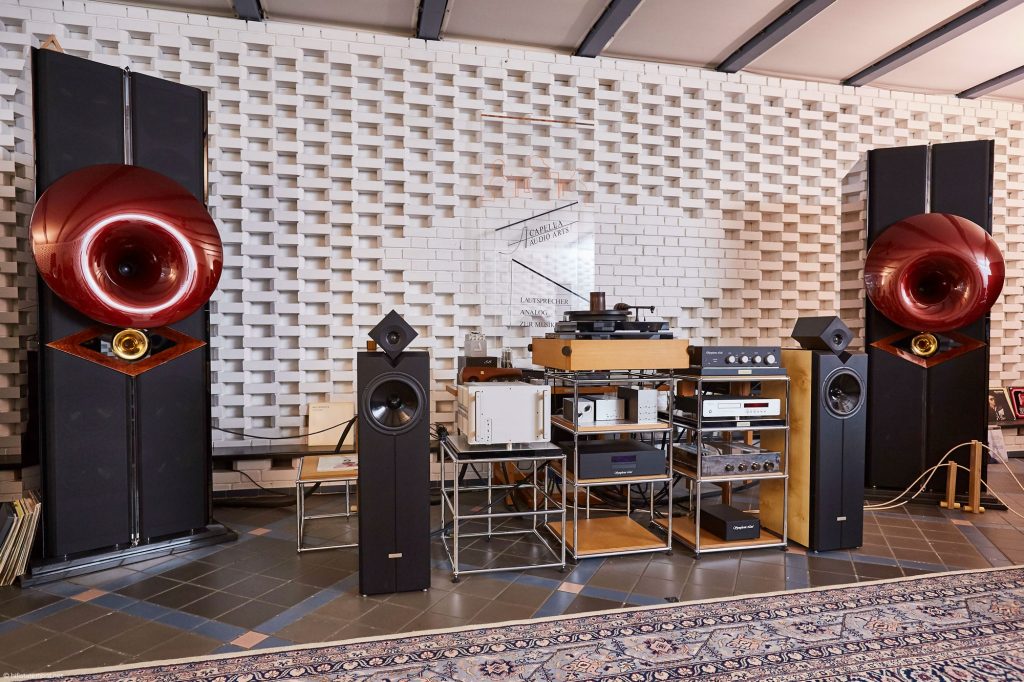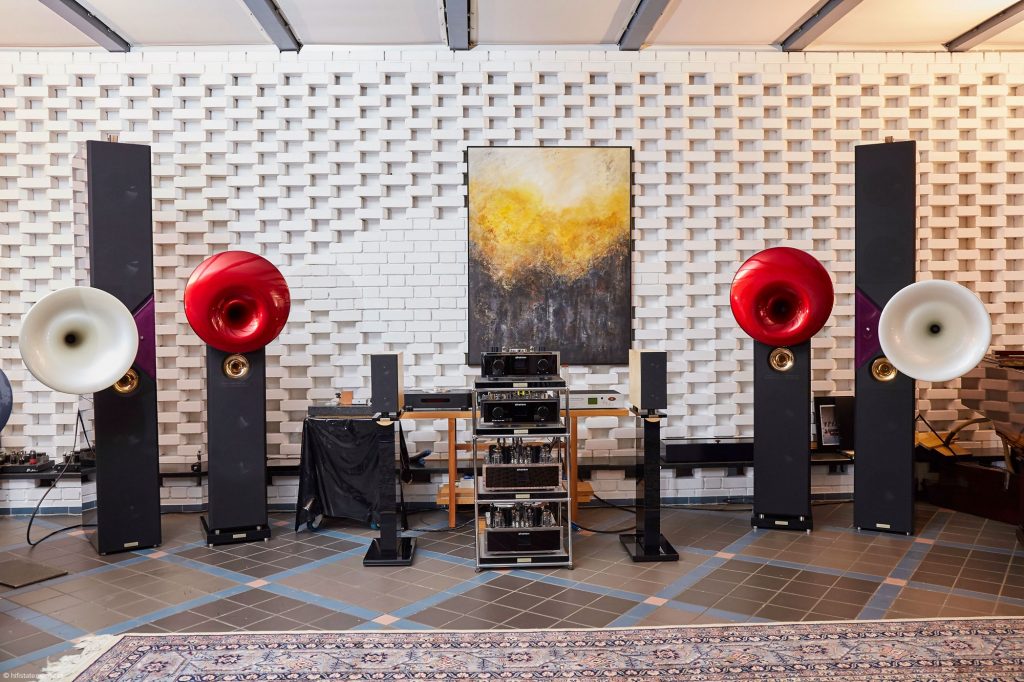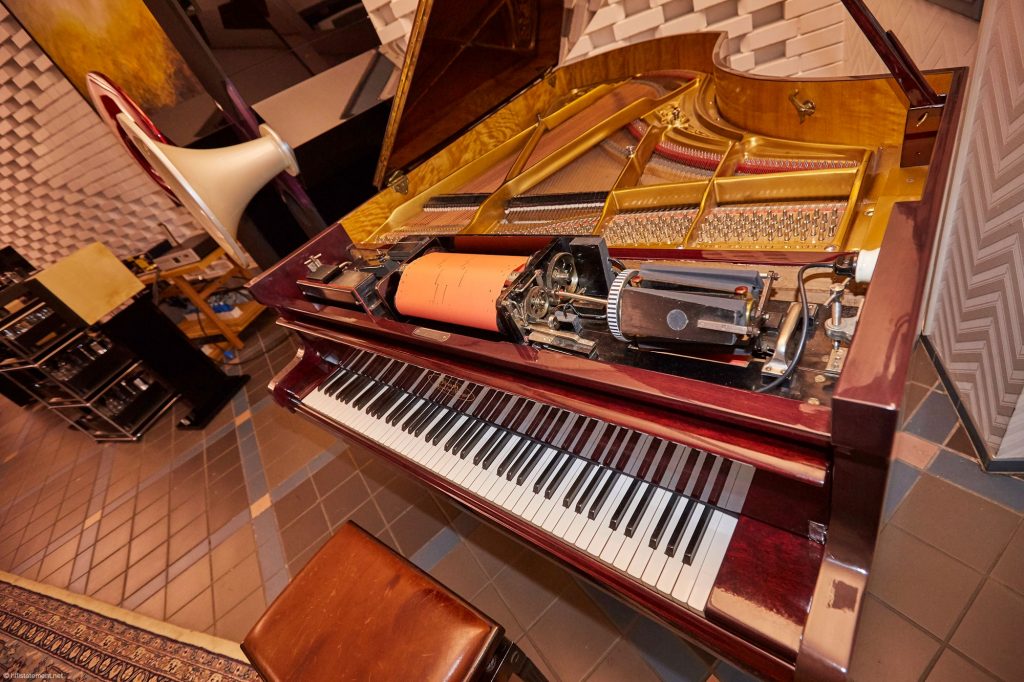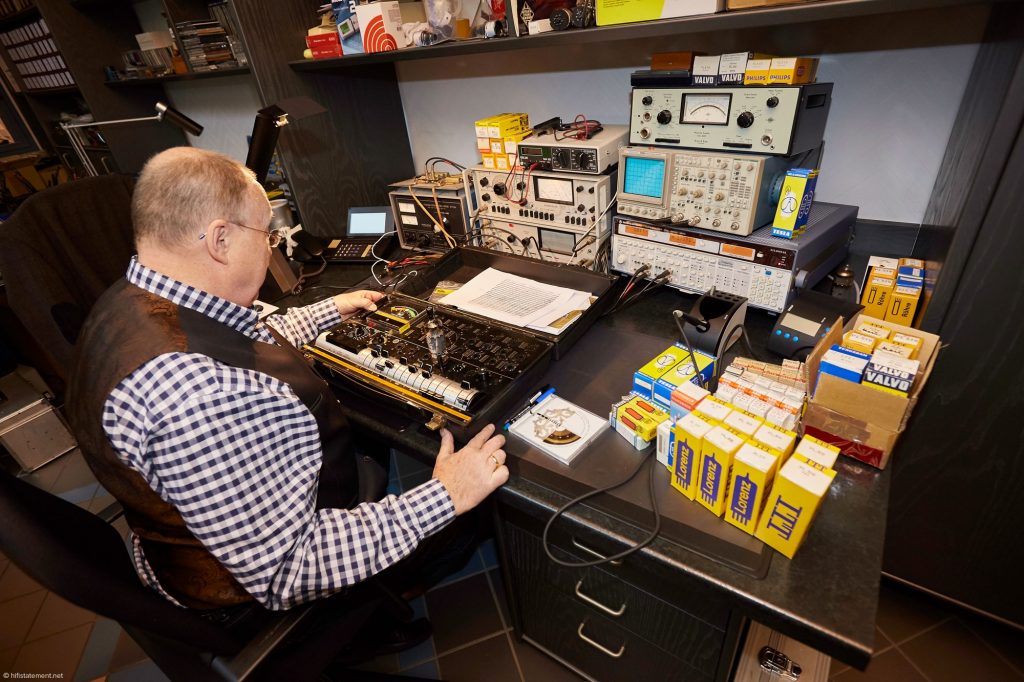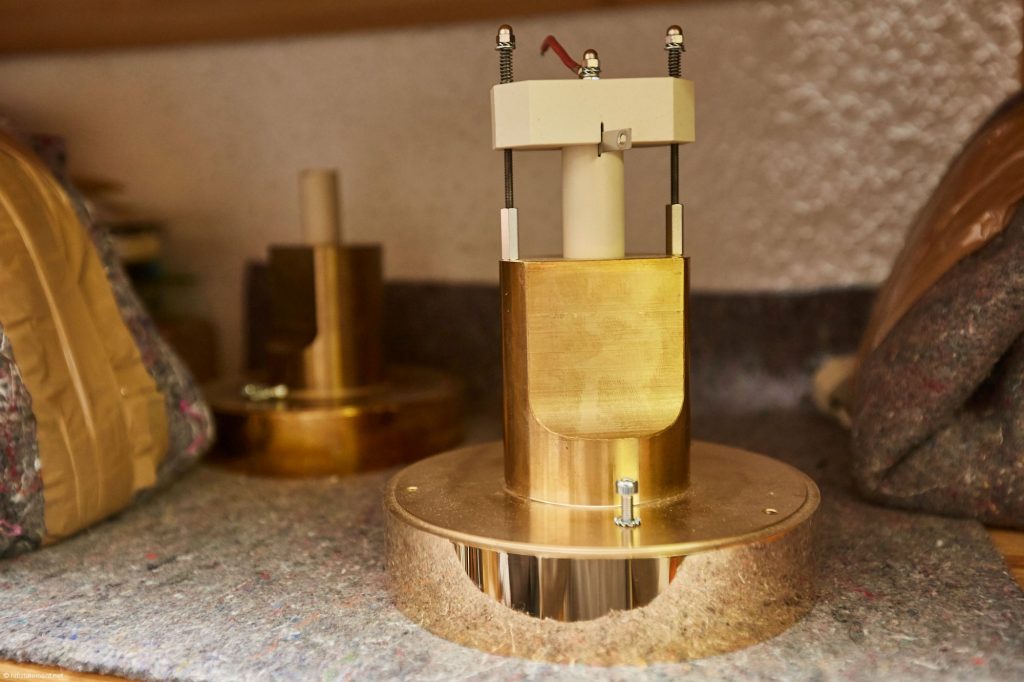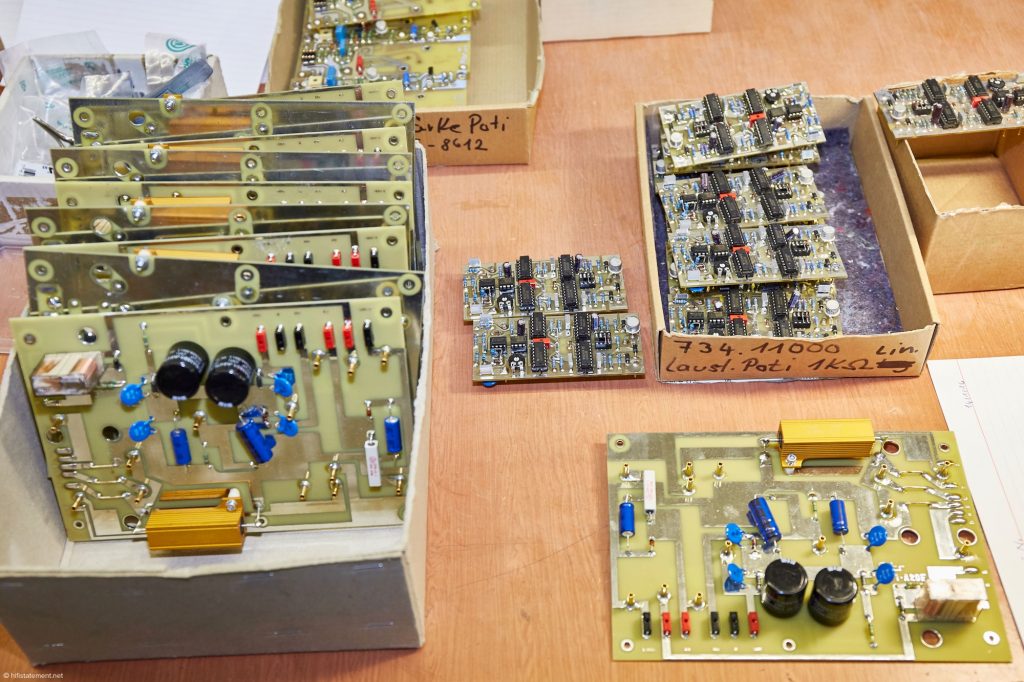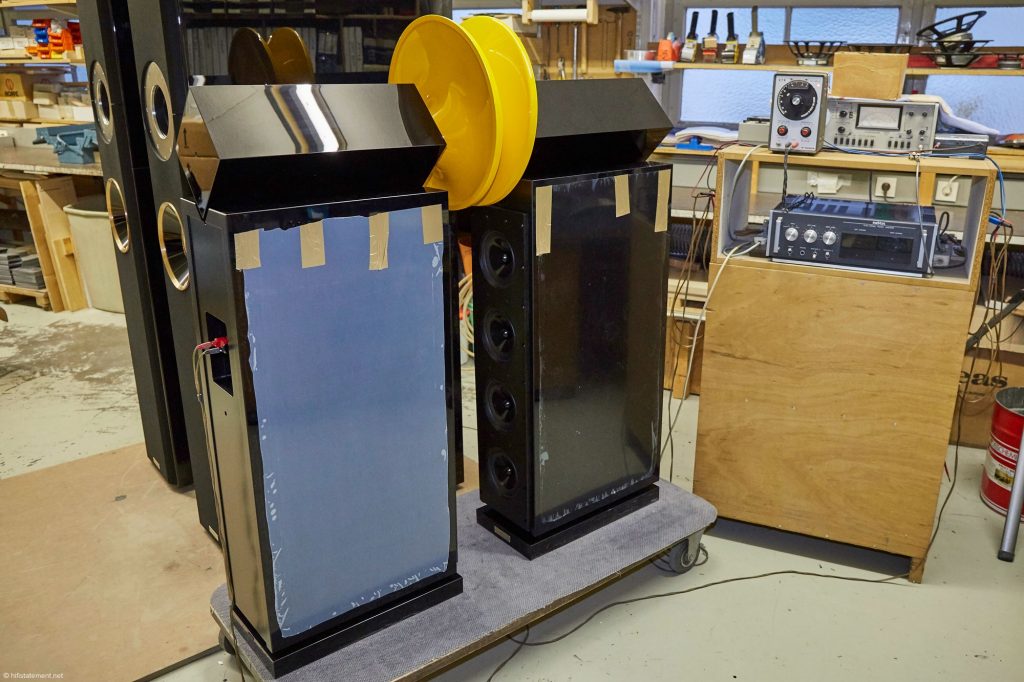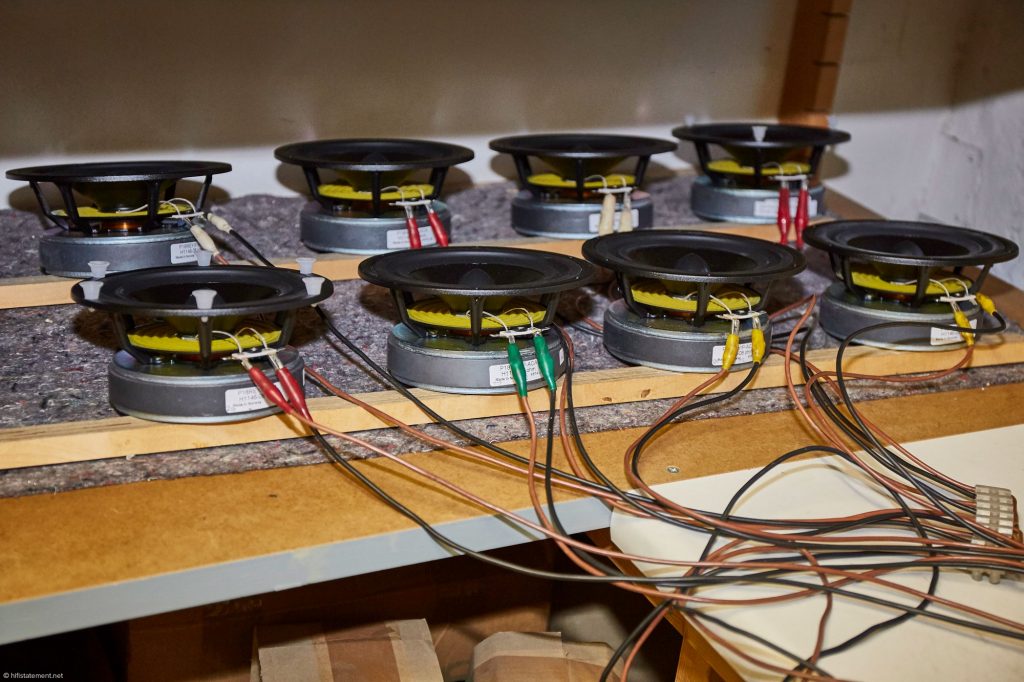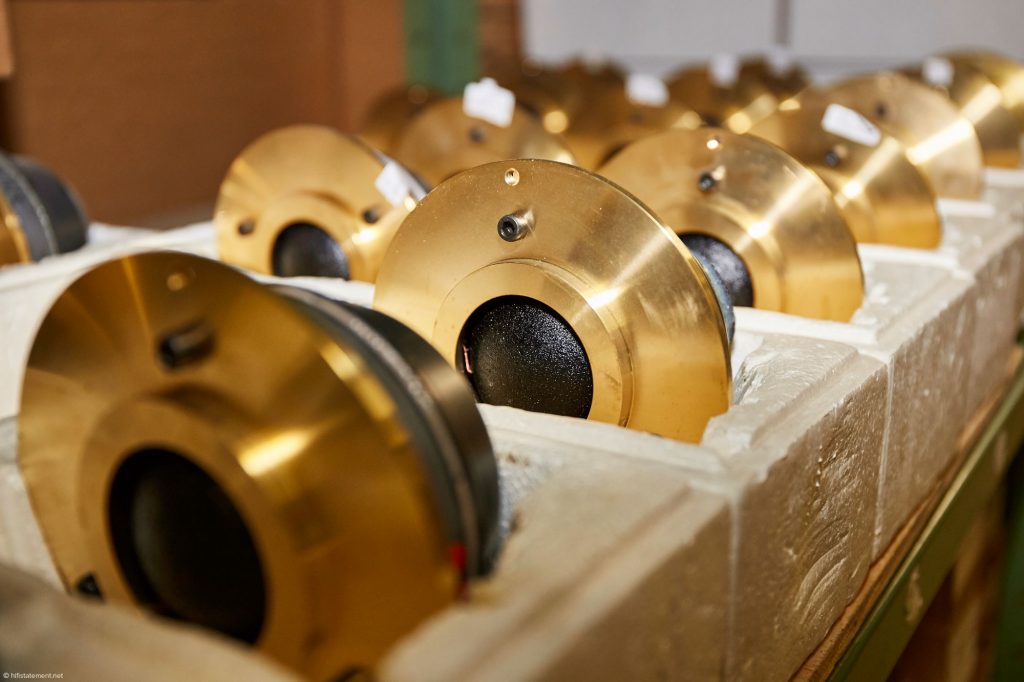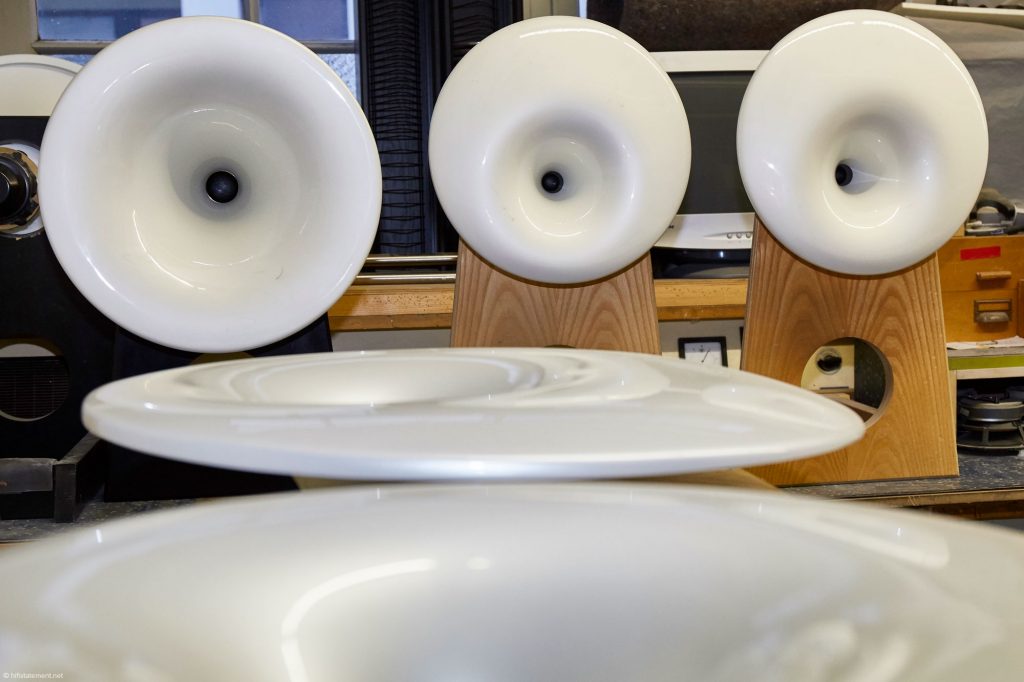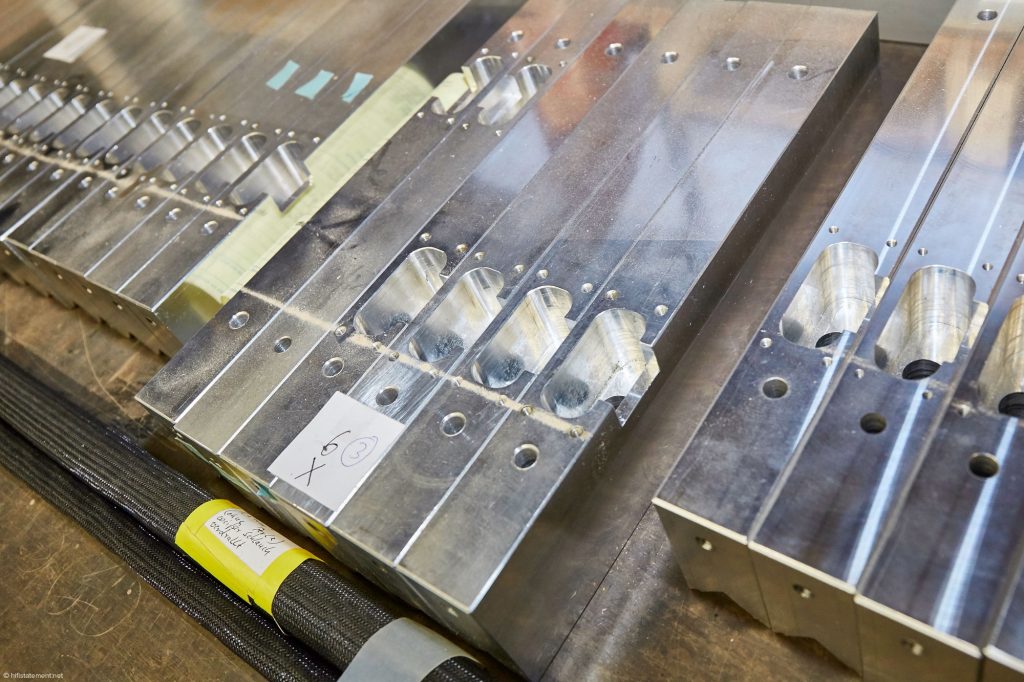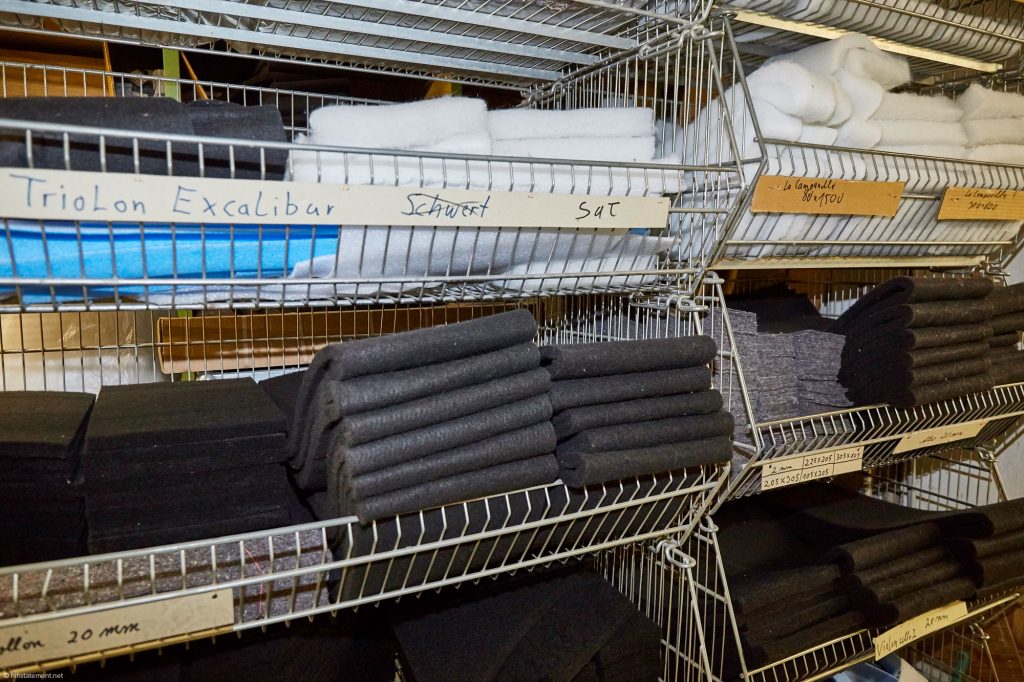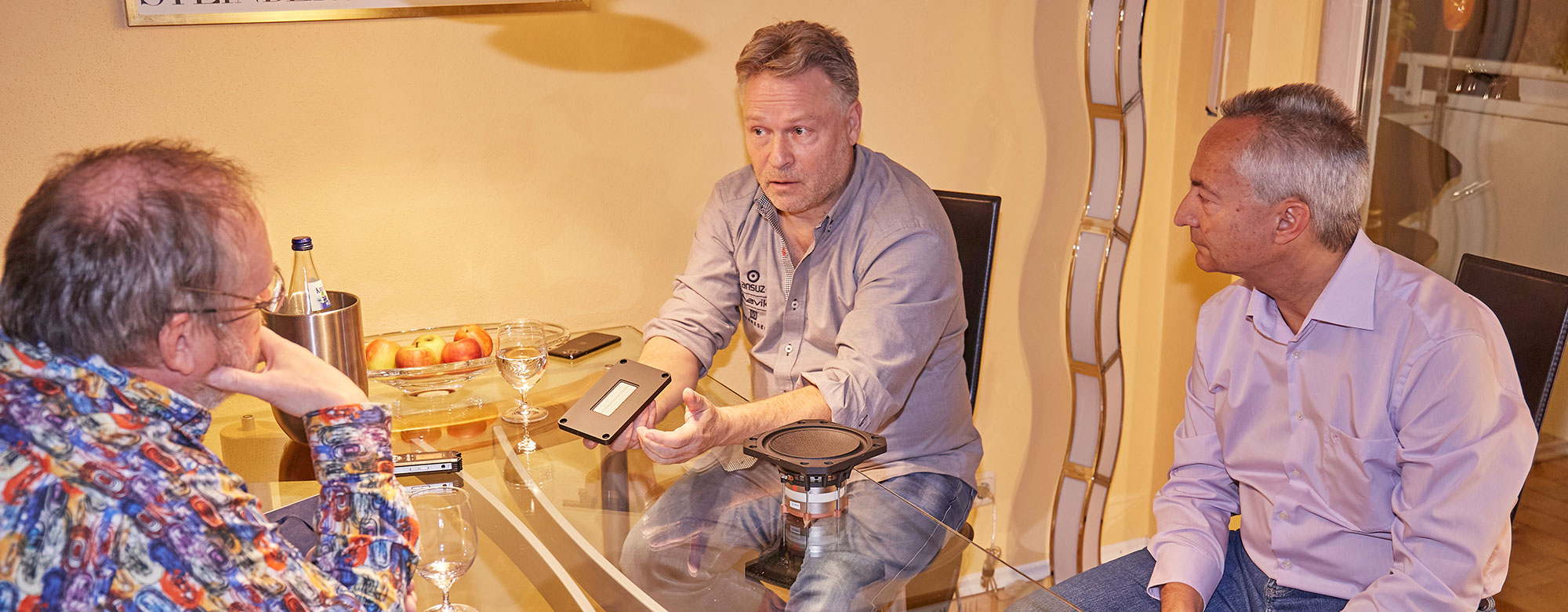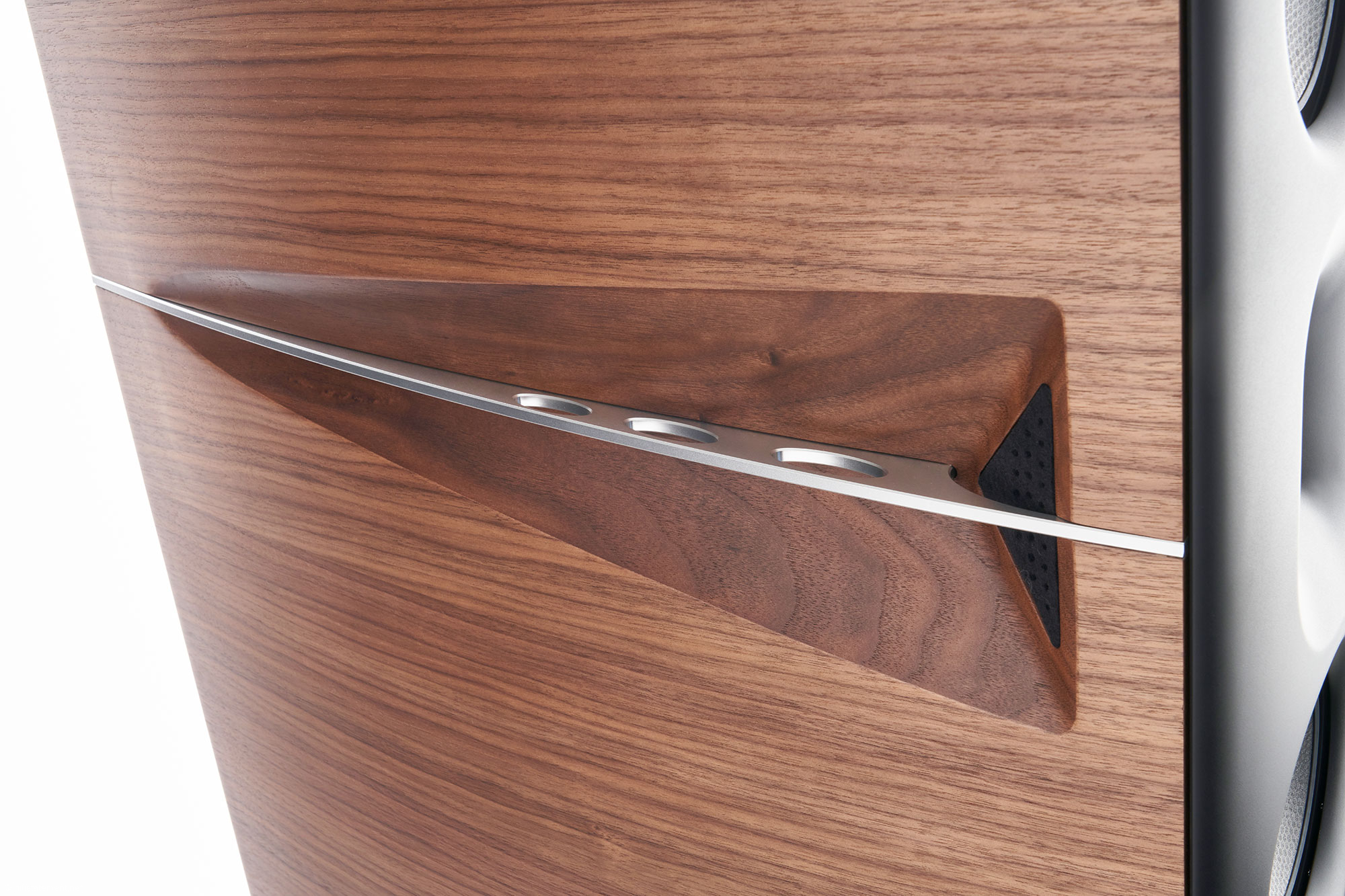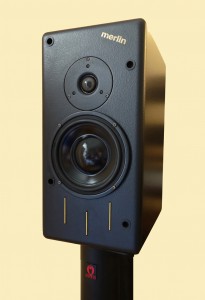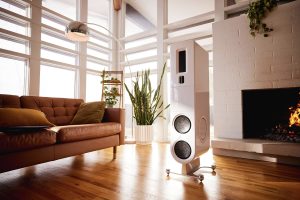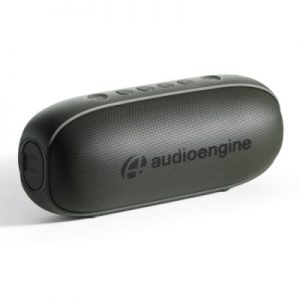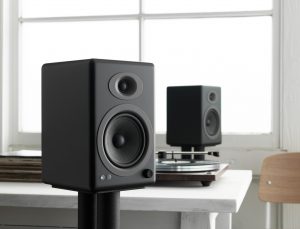Dirk Sommer, with photographs by Helmut Baumgartner
For everyone who takes a real interest in High End it's a truism that even the best equipment can't recreate a live impression. This alleged fact, however, while perhaps not refuted, would be at least seriously shaken by visiting the Audio Forum in Duisburg, Germany, the Acapella Audio Arts showroom.
As usual, my comments don't start with a description of the sound; you‘ll have to wait a bit for that. Instead, we'll start with the Audio Forum and both its founders: Hermann Winters and Alfred Rudolph, who got to know each other in 1972, naturally via the topic Hi-fi and music. Hermann Winters had already been running the company Hifi-Elektroakustik since his time at school, and Alfred Rudolph his company ARAkustik. They opened their shared hi-fi studio, Audio Forum, on 4th September 1976. Their trading licence has an even earlier date, but both of them see the foundation date of the company as the opening of the studio in the Koloniestraße 203 in Duisburg.
The first room which you enter coming in off the street was really small, and not really ideal acoustically. In the shelves on the left of the door were, back then, a manageable number of carefully chosen components from all price categories. Opposite those, Alfred Rudolph's creations were playing, ranging from the compact, still relatively affordable ATR monitor, to the dream loudspeakers with the spherical mid-high-horn and the exceptional Ion tweeter. Also some external brands were available here to compare them with. Single-speaker demonstration was, for reasons of space, not an issue here.
Right and left, the company founders Hermann Winters and Alfred Rudolph. In the centre Richard Rudolph, who has been active at Acapella for 10 years and helps his father with the development of, and will carry on leading, the company, with his brother Robert.
By the way my portrayal isn't based on plastic descriptions of the company founders or on 40 year old photos: I'm writing from my own experience. When I wasn't even dreaming about a professional career with hi-fi, but was studying German, Latin, and education at the Ruhr University in Bochum, I regularly commuted to the Audio Forum, which I didn't discover directly after its opening, but only in 1978 or 1979. The reason for my first trip to Duisburg was rightly and justifiably for an audiophile classic: Esther Ofarims solo album Esther as "ATR master cut recording." Hermann Winters can remember driving to the Cologne EMI studio with an estate car full of the best hi-fi equipment to check the recording. But the equipment there was so good that he could confidently leave his equipment in the car. Regarding the legendary re-issue he commented laconically, "With the first Esther I overdid it a little bit. We edited it with a peak level of plus seven decibels." From this slight exaggeration one of the biggest marketing coups in high-end history came about, the sentence on the cover stating "That ATR MASTERCUT RECORDINGS can be played back without distortion can be demonstrated in the ATR reference studio by appointment."
The Audio Forum in the Koloniestraße 203 has been one of the first hi-fi addresses in Germany for nearly 40 years now. Even the author has again and again returned to Duisburg.
Naturally my Thorens TD160 with an Audio Technica AT20SLA couldn't cope with the large groove modulations, and I was soon back in the ATR reference studio, alias Audio Forum, again. It began quite harmlessly with the assembly of a Mayware Formula IV on the aforementioned Thorens. But then I was sucked in to the sophisticated Audio Forum concept: Alfred Rudolph and Hermann Winters had a clear vision of what a high-quality chain should sound like, and for the customers who shared this sound ideal, a way to help prepare them for the multi-level journey to the summit. You began with a good integrated amplifier, and then once you had recovered from this investment, to hand it over without too much financial loss, and then in an ideal world to be able to purchase a preamp/full-amp combination which had previously been handed in as part-exchange. With turntables and loudspeakers it was the same: Without making big financial losses you could get closer to your dream hi-fi over the years in small steps – naturally only as long as you were in the Audio Forum cosmos. You got excellent advice and even support if you couldn't spend huge amounts of money.
Between the Basso Nobile with the light blue horns, the components which we used were The Beast, the LaMusika integrated amp, Alfred Rudolph's great drive, including the base, and a master recorder.
Do you need an example? After spending a lot of money to exchange my large Onkyo integrated for an Audiolabor Fein phono amp, including Michaelson & Austin TVA1, I couldn't get to grips with the coarse volume control, and couldn't afford a preamp. Mr. Winters obtained a highly-respected Burmeister resistor switch for me at a student price. No surprise, then, that after this, critical distance wasn't a problem. Alfred Rudolph propagated sandwich housing: the author obtained wood and sand, which made a rock-like sculpture from his ATR monitor. It should be mentioned in passing that he later sold it again at a cost-plus-materials price. In the Audio Forum, cables with a diameter of at least 10mm² were introduced: The author bought a drum of 25mm² and drilled it with the energetic support of my understanding girlfriend and a regulated power drill…both of the conductors. And if there was 35 DM left in the student budget, then they were invested in one of the highly sought-after Three Blind Mice LPs which were imported back then.
Alfred Rudolph uses an M15 for his recording, tape face out.
In my case I can't really deny an initial Audio Forum dependency. But even as a former near-addict then, allow me to make this evaluation: as a customer, there is nothing better for me than the Audio Forum concept. If you've got a sound ideal for your ears, you can get closer to it without unnecessary financial losses, and you will still get competent advice within this model. In times of audio vertigo due to an overabundance of options, the theft of advice, and an unspeakable "stinginess is cool" mentality, such a model seems to me to be extremely important. Fortunately, this is still possible with Hermann Winters and Alfred Rudolph: Here the customer still gets musical solutions and not just equipment.
The record player and the massive sub-construction belong to the Laudatio system, which also offers space for the phono amps from Tessendorf and Blue Amp. The lightweight turntable is powered by three balanced flywheels of 11kg.
Naturally, in the meantime there have been a whole range of new developments: nowadays, nobody would use copper tubes of this diameter. For quite some time Acapella has been offering much thinner copper and silver cables. And a classic of loudspeaker offerings such as the Violon profited from regular model updates—in fact, is now currently in its Mk VI version. But Alfred Rudolph and Hermann Winters have remained faithful to their basic principle that only a perfectly matched chain can deliver the desired sound. Despite significant international success, Alfred Rudolph is still searching for small possibilities to improve them. His special focus is on reducing sound-colouring resonance. At the end of the last century, Acapella Audio Arts Basis, Speed and Big Block were ready for the market. Since a review in 1999, I can't do without an Acapella Base under my record player. Even a change from Finite Elemente to Artesania Audio Rack didn't change anything. Although the latter brought sound advances for all other components, it's special phono platform couldn't convince me. Only after I put an Acapella Base on the four plastic feet of one of the other unit levels did the LaGrange drive sounded like I was used to, or even a bit better.
On the long tone arm there is nothing which resonates or rings. A completely adjusted arm including pick-up cartridge / stylus can be exchanged for another one.
At the moment tonearm bodies are made from Okume laminated wood and other woods, with and without ebony inserts to dissipate the resonance, which then get the finishing touch. Amongst them is an isosceles triangle, which should get the name "triad." Alfred Rudolph demonstrated the effectiveness of his tuning bodies on our hi-fi in our sitting room when he visited, where my wife and I could enjoy the benefits of a Violon MK VI. Over and over again it's astonishing to see what effect small changes can have in a very high-quality chain. For critical recordings the intelligently constructed resonance reducers can have a big effect, if placed with experience—whether they are enjoyable, or so annoying that you would rather do without them.
Even for the small drive wood is the chosen material.
If the recording medium is a record, then Alfred Rudolph has another recipe to let these sound more open, freer, smoother or in the worst case, simply tolerable. He moistens the velvet surface of a record cleaning "brush" with a little bit of Squalan oil and puts this on the record. During playback the diamond distributes the oil into the grooves. Even if the sound after one application sounds more pleasant, flowing, and less "technical," the positive effect increases during the next three playbacks. The diamond distributes the oil more finely and "polishes" the groove, as Alfred Rudolph puts it. Years ago a stylus manufacturer gave me a demonstration of the effective fluid sound improver. But back then the basic principle was "lots helps a lot," and the treated record left marks on the turntable, which is why I didn't touch Squalan oil up until now. However if you apply it sparingly and effectively as recommended by Alfred Rudolph, the tonal advantages outweigh the small effort by a long way. (But this article shouldn't be about tips for getting better playback from records!)
The LaMusika integrated amp is a wolf in sheep's clothing: it doesn't only shine with a component tolerance of one thousandth, but is also able to generate up to two kilowatts of pulse power.
It's not that in the 22 years that I've now been living in Bavaria I haven't been back to Audio Forum. At exhibitions I've met Mr. Rudolph and Mr. Winters regularly, and I found myself breaking my golden rule of never listening at exhibitions in front of an Acapella chain. But here it wasn't about the impossible task of evaluating one or another individual component in unknown surroundings. Hermann Winters and Alfred Rudolph always ensure—whether it's in a showroom at the exhibition or at the customer's home—that they create a harmonious overall concept. And this is why I found myself at one or another "hi-fi deluxe Show" relaxed in the Acapella room enjoying music, instead of racing from one appointment to the next.
The big brother of the integrated amp: the amplifier is powered by 380 Volts AC current, gets its energy from the nine transformers and has an output of two times four kilowatts.
An extensive visit to the Audio Forum during a visit to the Ruhr area was without any time constraints. On my way from Dortmund to Duisburg, I made a small detour to Düsseldorf airport to pick up Helmut Baumgartner. As to putting the shiny Acapella loudspeakers in their photographic limelight I don't really trust myself; to do this it really needs a professional. Naturally Baumgartner knows the imposing showroom from the internet appearance (here's the link), and doesn't want to believe that this showroom is behind this very non descriptive shop in the Koloniestrasse 203. But for Acapella it was never about the outward appearance of their store. From what we experienced in talks with Hermann Winters and Alfred Rudolph, I can only tell you about one thing, even if it's the main thing. No, it wasn't a discussion about confidential company secrets, even if there's such a thing. After talking in a large group for a while, both of them quickly realised that Helmut Baumgartner knew at least as much about hi-fi and high-end audio as he did about photography. And this is why I was absorbed in my talk with Alfred Rudolph in the entrance area, whilst my photographer colleague was exchanging views with Hermann Winters; or after dismantling the lights I was listening to his favourite records streamed by The Beast, whilst Helmut Baumgartner was talking shop together with Alfred Rudolph in the neighbouring room.
The power amp from behind: bottom left the AC current socket.
But first things first: Just after welcoming us, Alfred Rudolph presented us with some of his recently made recordings of the Talking Horns. The multi-instrumental quartet plays alto, soprano, tenor and baritone saxophone, bass clarinet, alto flute, trombone, bass trombone, tenor horn, tuba and flugelhorn, and those also even in church rooms with their impressive reverberation time. For the recording, two Neumann small membrane microphones were used on a wooden ball, whose amplified signal was recorded with a Telefunken M15. This tape machine was just standing in the Audio Forum. As the recording should be released later on LP, and thus unnecessary playback of the original tapes was taboo, we listened to the tape which was running during the rehearsals, but with the discussion between the musicians in the intervals or pieces of songs, which came over even more authentically. For the playback via the Poseydon loudspeakers, a roughly 600kg heavy construction with twelve ten inch bass drivers, hyper spherical horn, and ion tweeters, with an efficiency from roughly 99 decibels, at a price per pair of more than 200,000 Euros, it really felt like being in a church. The instruments sounded just like in real life at their original loudness and volume, without any limitation at all in dynamics—it was possible to feel the acoustics of the recording room.
In the rack between the Harlekin MK IIs you can also find alongside LaMusika electronics components from Symphonic Line.
This was not the hi-fi stereoscopic effect, an illusion of a room that reaches well beyond the back of the loudspeaker level, which can be created with very good chains. The Acapella chain seemed to bring the listener into a room with musicians. And if these seemed to stand in the large showroom with a realistic size and distance to you, any projection of the quartet in the virtual depth behind the speakers would only be hi-fi gimmicks. The playback of Alfred Rudolph's recording via his loudspeakers is closer to reality than anything I've heard before—even if it's for a rim shot on the snare, one of the meanest impulses, which usually overstrains the dynamic capabilities of even very high quality equipment. But a loudspeaker system which didn't even have the slightest problem in reproducing four partly unleashed playing wind instruments including tuba players wouldn't show any weaknesses even for drums. Whoever can also name the spatial and has the pecuniary requisites for a Poseydon should at least experience it once in the Audio Forum. I don't even want to think about larger models.
Rack and Harlekin surrounded by two Poseydon, which make it child's play to reproduce the volume and size of a brass band in the showroom realistically.
A large part of this successful presentation naturally was due to the unsurpassable source, the master tape. But that's not all: Alfred Rudolph naturally has tuned the recording as well as the playback chain, with—among other things—a type of wooden rocker near the head carrier of the M15. As part of the test recordings were made with, and some without, these items, the effect of the extremely highly detailed chain in the Audio Forum can at least be understood. Having their own recordings of orchestras or jazz combos are another connection for the owners of Acapella. Alongside the audiophile republication of Esther, Cantate Domino, Jazz at the Pawnshop, Antiphone Blues and Sweet Lucy, Hermann Winters also did his own recordings, first in analogue, and then increasingly, for logistical reasons, in digital. For him it was important to limit the number of microphones—at the most two—to exclude phase problems. Surprisingly, he doesn't automatically believe that a master tape is the best sounding medium: "A record can sound better." He even has an answer ready for the objection that the record playback would be accompanied by mechanical artefacts: "If you can hear mechanical artefacts, then Alfred hasn't optimized the record player. A record player can also be an instrument."
Einstein components are surrounded by Fidelio MK III, High Cecilia and Campanile MK IV (from the middle to the outside).
In the meantime, Alfred Rudolph is the more active one regarding his own recordings and, as mentioned, doesn't even shy away from transporting a Telefunken machine. At the moment, Hermann Winters' hobby is the enormously time-consuming restoration of an Ibach Welte grand piano. Of 1090 grand pianos, only 55 of these were built by Ibach, which are able to reproduce, thanks to piano rolls, the play—including the touch sensitivity— of leading Pianists, true to the original. In total about 4500 pieces including pianos and Pianolas (player pianos) were manufactured. One of Hermann Winters' best memories is lying under the home grand piano, listening to it and tuning it. Was it back then that his roots for his lifelong engagement with the reproduction of music were laid? "No" Hermann Winters objects, "they are much older than this." The origins were his dad's record player, radio and tape recorder which he was allowed to use at a mere 3 years old, and his friend's "amazing equipment" at the beginning of the sixties.
Hermann Winters' Ibach-Welte red grand piano: the note values and the intensity of the stroke are saved on the red paper roll.
Hermann Winters is, by the way, also responsible for the production of the Ion tweeters. In the workshop in the Koloniestraße you can always find a whole string of these excellent tweeters. In my experience, no diamond inverse dome can even get remotely close to the vividness of a TW1S, which are subject to a daylong endurance test before they are used. The tweeters are only manufactured for their own use, even if their list on the website suggests the assumption that they may also be bought separately. The production of the TW1S is far too expensive to be able to make them available to other manufacturers. Hermann Winters made it categorically clear: "We don't make supplementary chassis for different external constructions."
Hermann Winters at his luxuriously equipped measuring station, testing tubes.
In the next half hour Hermann Winters tried to convince me that it's not an exaggerated expense, that it's not even really necessary, to have the smallest Acapella loudspeakers with Ion tweeters to enjoy pure listening pleasure. Perhaps he wanted to bring me back down to earth after my enthusiasm for the unattainable Poseydon. So we listened to a chain with the Basso Nobile, a two-way construction with hyper-spherical horn, which only cost a little more than a tenth of the Poseydon. And really, nearly all pieces, which he called up from the music server via iPad, had a special something. At the time when I was a regular customer in Audio Forum, I would have worded it like this: the colourful mix of different genres sounded like they were all Direct-to-Disc recordings. In the ‘80s it was said that they sounded especially dynamic, open, and lively. The equipment that we listened to at that moment did that too. If you looked closely then it was clear that, in comparison to the ones previously listened to, the only moderately priced components were the Basso Nobile. The LaMusika integrated amp took care of the amplification, where the component tolerances are consistently in the thousandths. Then the basic price of 80,000 Euros is not really surprising, and it can easily be boosted by adding a few extras. As a source, The Beast by ReQuest Audio, which Hermann Winters has really taken to due to its sound and simplicity to use, is a worthy match. Finally, the most impressive experience for me was how impressively the Basso Nobile brought the qualities of the upstream world-class electronics to the fore.
Ion Tweeter being tested.
When Alfred Rudolph took over the showroom again, he demonstrated the influence of his wooden rocker near the tape heads of the M15 once again during playback. Thanks to it, the musical flow was more intensive; the playback came out a little bit less "technical." Especially interesting for me, as when comparing digital components I have always preferred the ones which suggested a larger room, was Alfred Rudolph's cable comparison. Although the second cable apparently transported less energy, which you could hear immediately, I initially thought of this as the worse one for a few seconds. However, it proved itself to be the more harmonious one after a few minutes; the playback sounded more down-to-earth, not quite as "nervous." The developer worded it like this: "Now the energy flow is right." Sometimes less can be more.
The brass horn of an Ion-Tweeter.
Finally, Alfred Rudolph told a little bit about the beginnings of his loudspeaker development. He, like many others, started with the loudspeaker books by Klinger, but quickly recognised the limitations in them. With his early developments there were very different concepts, such as a four-way loudspeaker, a combination of softly fixed Isophon low-to-midrange driver with a soft dome, as well as a transmission line with the Isophon orchestra coax chassis. Today he develops the "Silver Edition" of a model first, which with their silver cables offers the best possible resolution. From that he creats a "friendlier" tuned version, as the "Silver Edition" only works in perfectly attuned chains.
Probably the best tweeters ever are waiting to be used.
Then there was just enough time left for a trip to the production facilities close by, before I had to take Helmut Baumgartner back to Düsseldorf. We weren't allowed to visit Alfred Rudolph's holy production halls this time. Rumour has it that alongside current new development, such as further variants of the wooden resonance reducers, there are curiosities such as Dual turntables bought on eBay and then completely modified. But how on earth should one day be enough to summarise the history, developments, and anecdotes from 40 years to some degree? It seems nearly impossible not to plan another visit for the not-too-distant future. As Alfred Rudolph and Hermann Winters obviously still have a lot fun with good music and its suitable reproduction even after 40 years.
In Acapella's production halls, the PCB Boards for the Ion tweeters are assembled.
After assembly the finished loudspeakers are warmed up before the final check.
Even before assembly into the housing the woofers have many hours of operation.
Opulent stock? The first impression becomes more relative if you think for example that in a POSEYDON twelve woofers are assembled.
The drivers for the mid-range horns.
Spherical and hyper spherical horns.
For the Violon these rails connect the horn supports, for example, to the rest of the housing.
The huge choice of soundproofing materials for Acapella sound transducers indicates that careful attention was given to the slightest details that would benefit the performance of their speakers.




